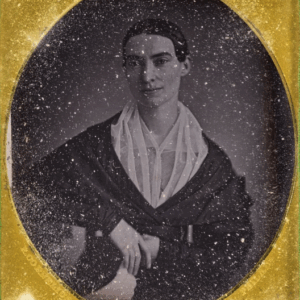JTF (just the facts): Published in 2023 by XYZ Books (here). Hardcover, 16.5 x 21.3 cm, 98 pages, with 54 color and black and white photographs. In an edition of 350 copies. Design by Inês Nepomuceno. (Cover and spread shots below.)
Comments/Context: Particularly in the past decade or so, a growing number of contemporary female photographers have returned to the female body as a primary subject, often using self-portraits to challenge stereotypes and offer alternatives to the male gaze. The list of accomplished names is building quickly, including Talia Chetrit, who shares her vulnerability through expressive visual portraits; the Finnish artist Elina Brotherus, who is known for her self-portraits charged with complex personal and emotional experiences; and Pixy Liao, who makes collaborative self-portraits with her partner Moro, challenging gendered displays of power. Self-portraiture and self-analysis are also central themes in the work of the Portuguese artist Rita Lino.
Lino’s experimentation with self-portraits started simply because there were no other people around her to photograph, and over the last several years, she has published a number of photobooks that have presented a range of innovative self-portraiture projects. In Entartete (from 2015, reviewed here), Lino embraced her sexuality and an almost fearless sense of self-analysis, exploring her relationship with her body, and her more recent book Replica (from 2021, reviewed here), also focuses on self-portraits, this time with a more conceptually-driven approach.
Lino’s new body of work was developed during an Artist-in-Residency program supported by XYZ Books, and was made with the deliberate intention to take shape as a photobook. The title of this new book, Escavadora, is the Portuguese word for “excavator”, “a feminine noun that exudes the power and strength of a machine.” In the series Lino uses her nude body as a tool for exploration, pretty much literally digging through an endless dark tunnel.
Escavadora is a relatively small sized book, intimate and comfortable to hold and browse. Its unusual cover immediately stands out: the colophon details (which are usually buried in the back somewhere) are placed front and center, organized in a white table placed against black background. This design choice recalls a technical dossier, a formal report, or a work order. The book is printed on black glossy paper, with all of the images shown full bleed. There are no captions, page numbers, nor any other text or design elements, inviting us to focus entirely on the visual flow of the narrative. And the strong presence of dark color repeatedly reinforces the idea of the excavation process and moving through the unknown.
The book opens with an image of what looks like a headlight (perhaps of a machine or lamp) placed in the lower part of an otherwise black page, which is then printed as positive on the other side of the page. This is followed by a photograph of what looks like some kind of ancient excavating machine set against a plain black background, and then a full spread horizontal image of Lino naked on her knees in swirling water. This sequence creates suggestive parallels between two images, with the body serving as a tool for exploration. While many earlier photographers posed female nudes on sinuous rocks, creating a hard/soft contrast of sensuality, in her work, Lino often treats her own body in a machine-like manner, and in this series it repeatedly takes machine forms. As the storyline unfolds, we move through a dark tunnel, as the artist and the machine excavate the way forward, guided by curiosity.
“Outside of temporal and spatial limitations”, Lino’s photographs create a dystopian mined underworld of rocky surfaces, where shadowy figures with distorted limbs pop up here and there, scratching through the tunnels. One spread pairs a portrait of the artist nude shot from behind with an image of a studio-like setup with lights and background to photograph a small rock, where both the body and the rock are seemingly the subjects of exploration and research. Another full spread pictures an old excavator squeezed inside a tunnel taking up the entire frame, and other images of mining equipment, with scraping shovels and buckets appear in claustrophobic dark enclosures. Occasional bright spreads balance these dark moments – the bluish exterior of an old pipe, a red puddle against a pink sandy surface, a patterned area of predominantly green color and the bright blue sky over the hills – and perhaps these shots symbolize the findings of the excavation process.
One of the last images in the book takes up the entire spread, depicting the dark form of a female figure seated on the rocks by a rocky landscape. Has she climbed out? Is she outside the cave now? The very last image, a vertical shot of the cave with the excavating machine in the background, suggests that perhaps the work is not yet over. Escavadora immerses us in the disorienting atmosphere, where a nude body should normally be vulnerable. Just as in Lino’s earlier work, her bold approach treats her own body as a tool for exploration, and keeps pushing its boundaries.
Collector’s POV: Rita Lino does not appear to have consistent gallery representation at this time. As a result collectors interested in following up should likely connect directly with the artist via her website (linked in the sidebar).
























